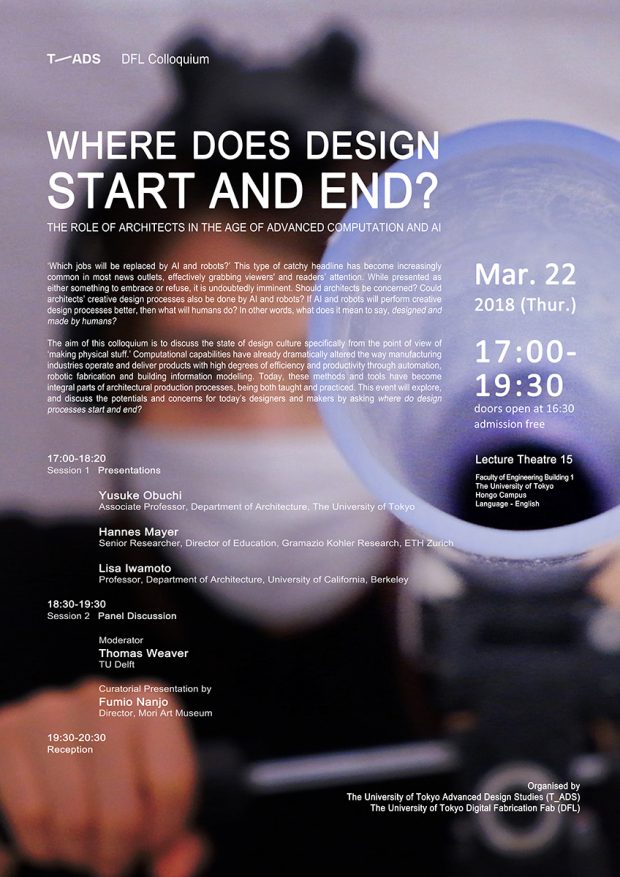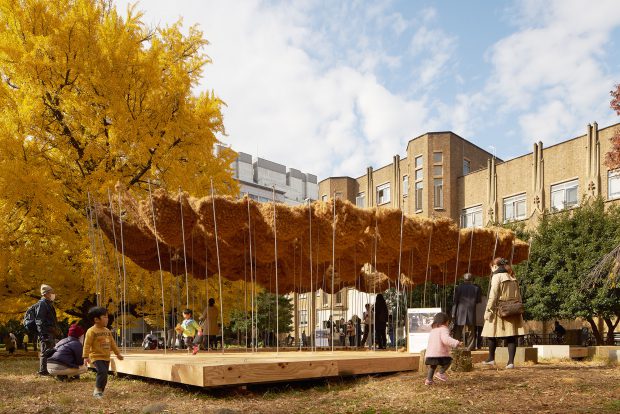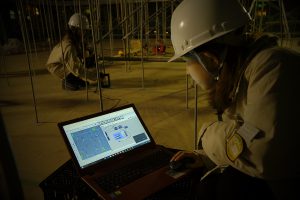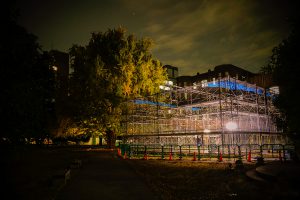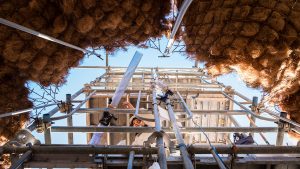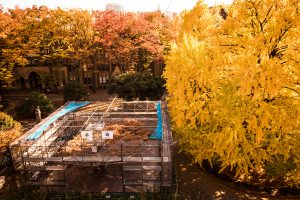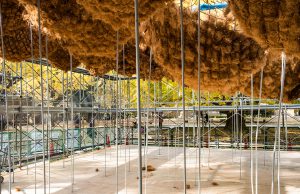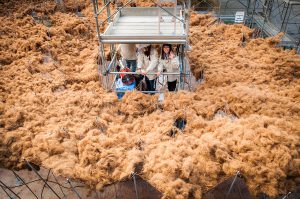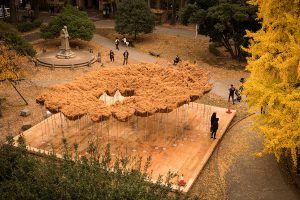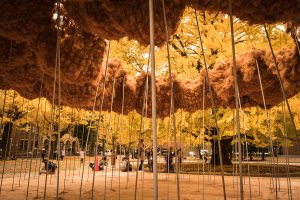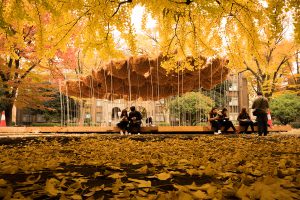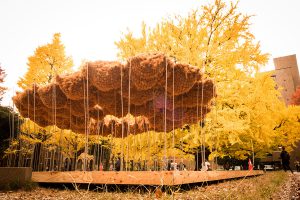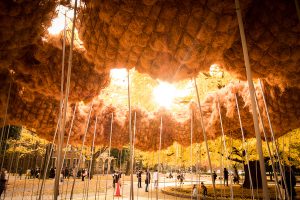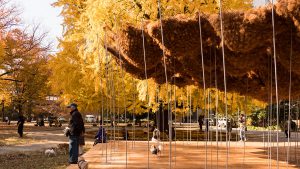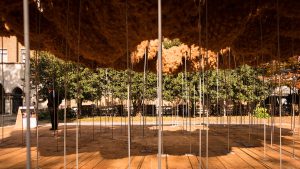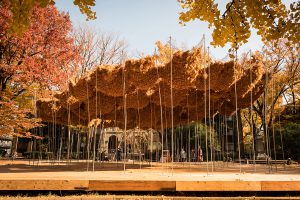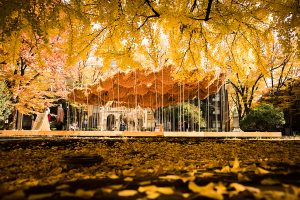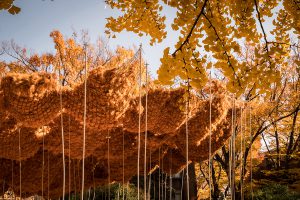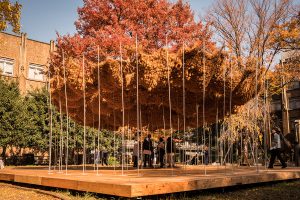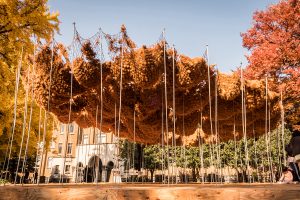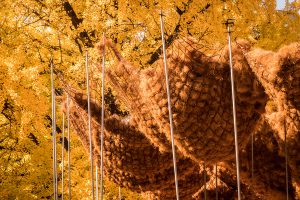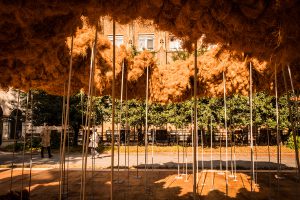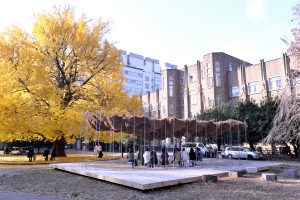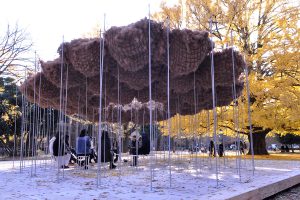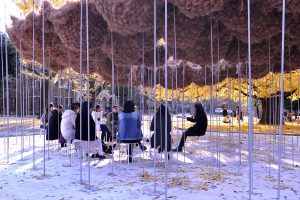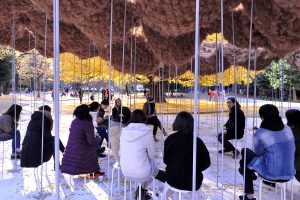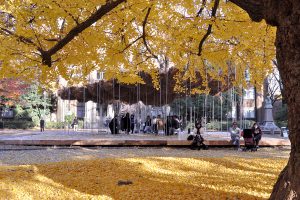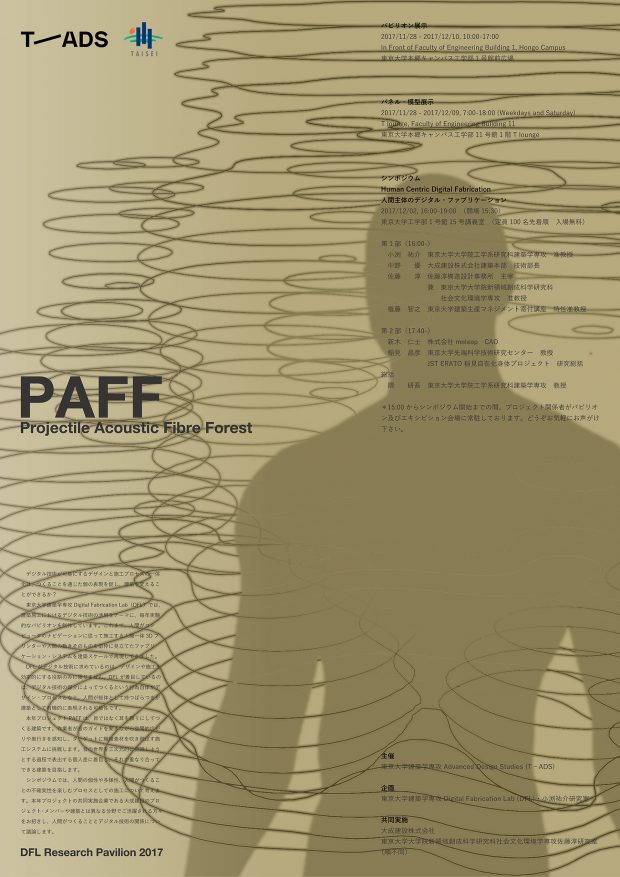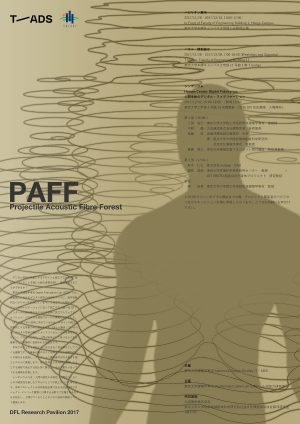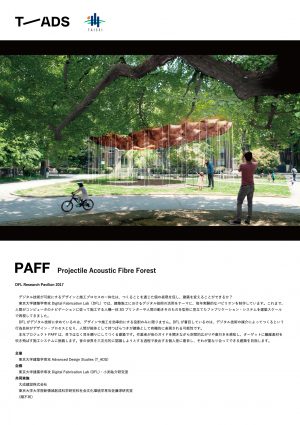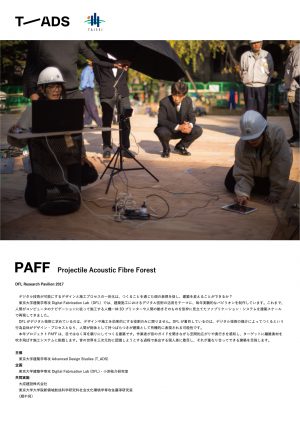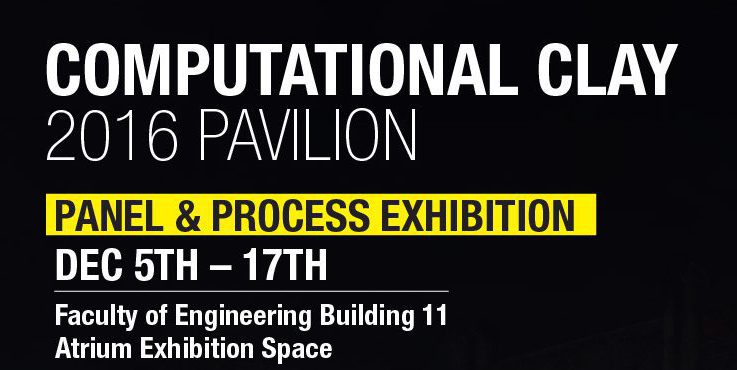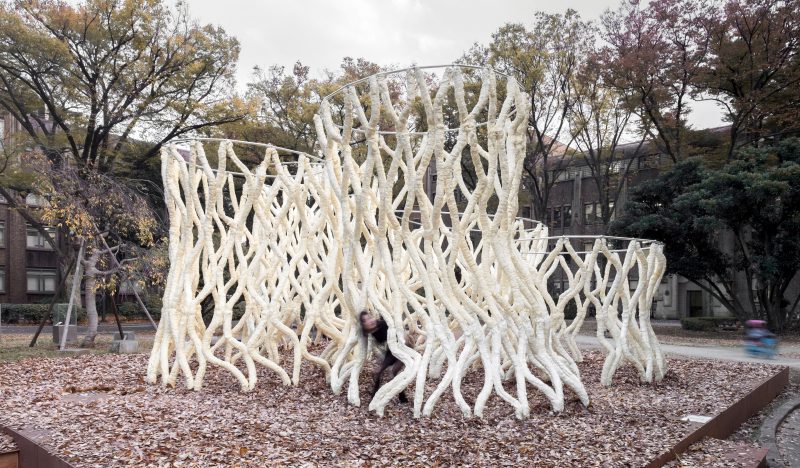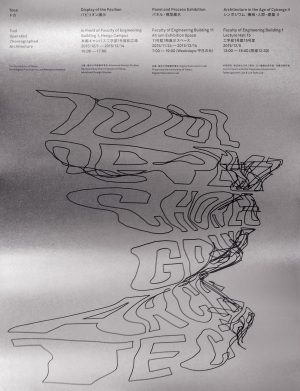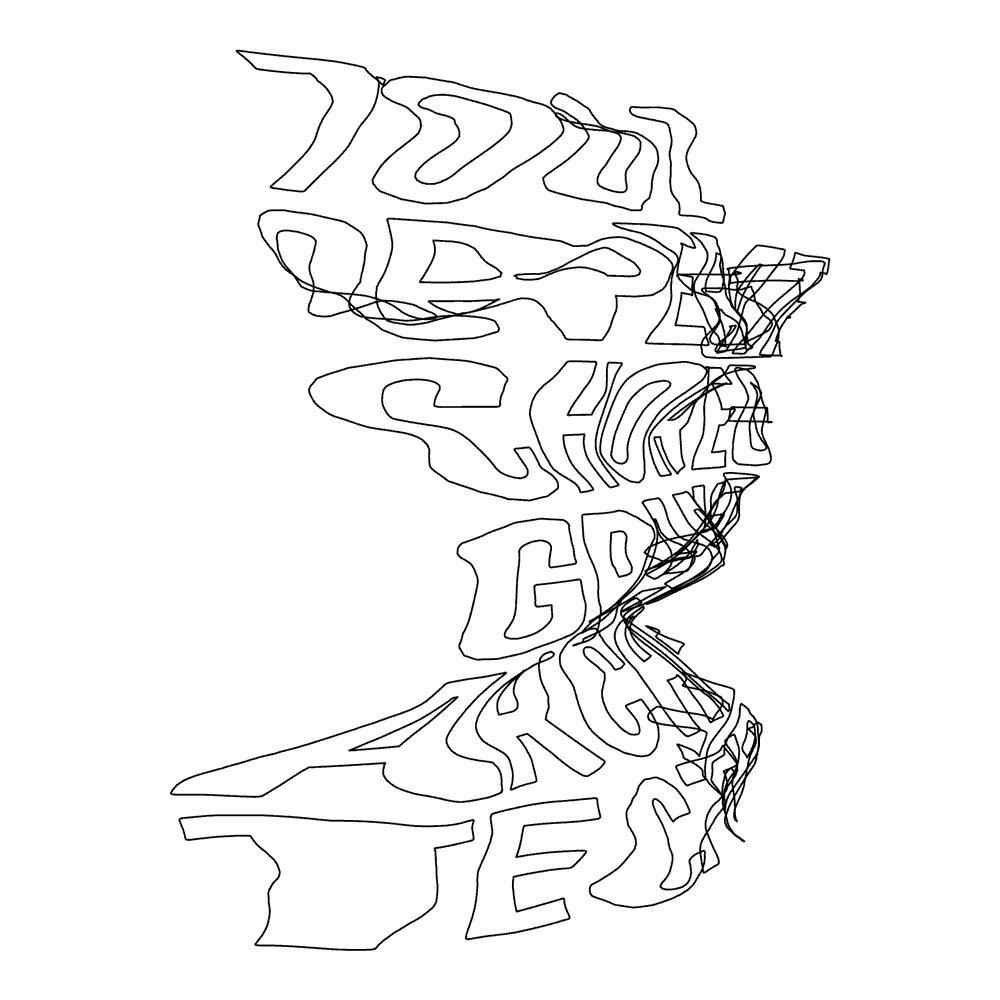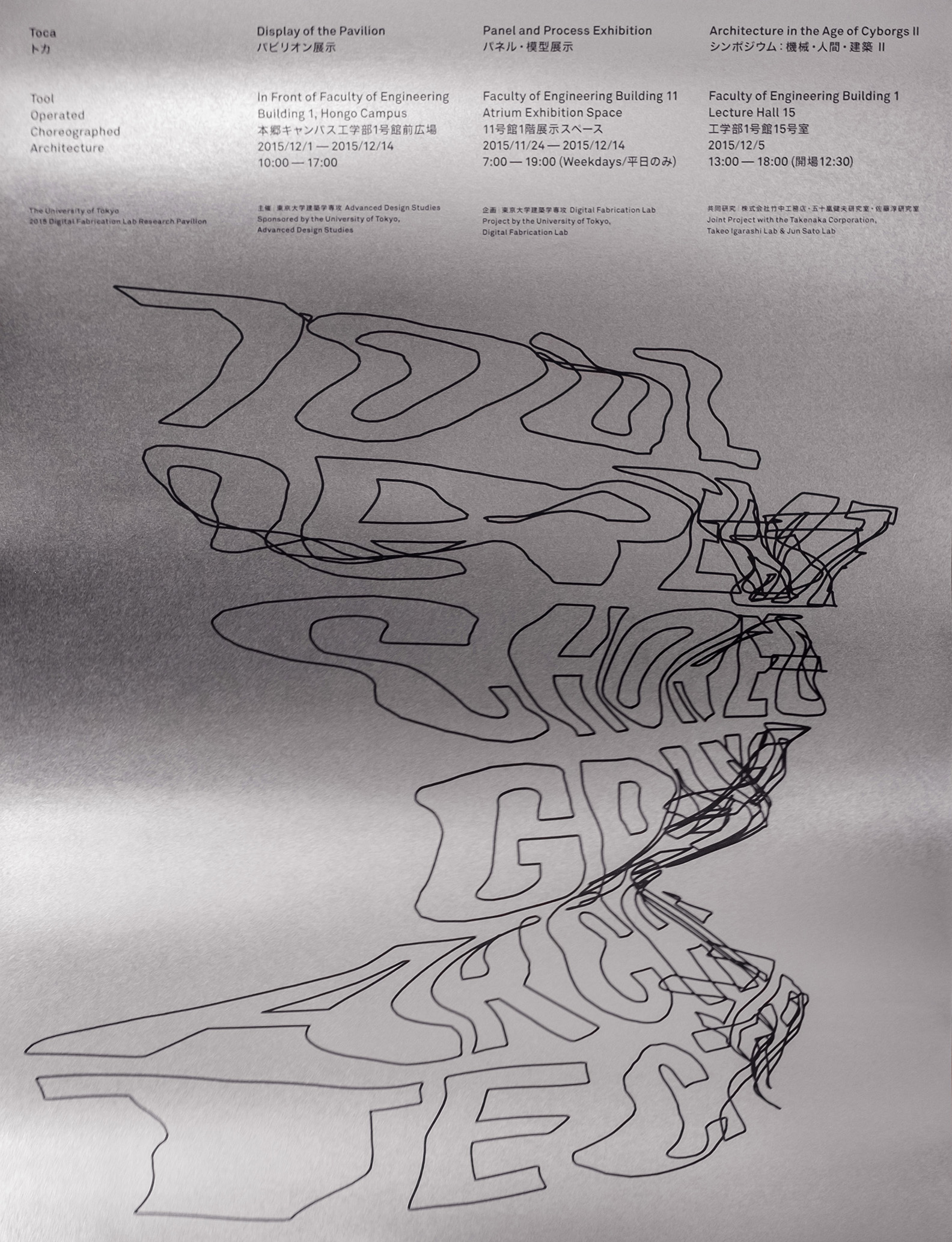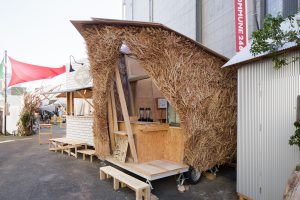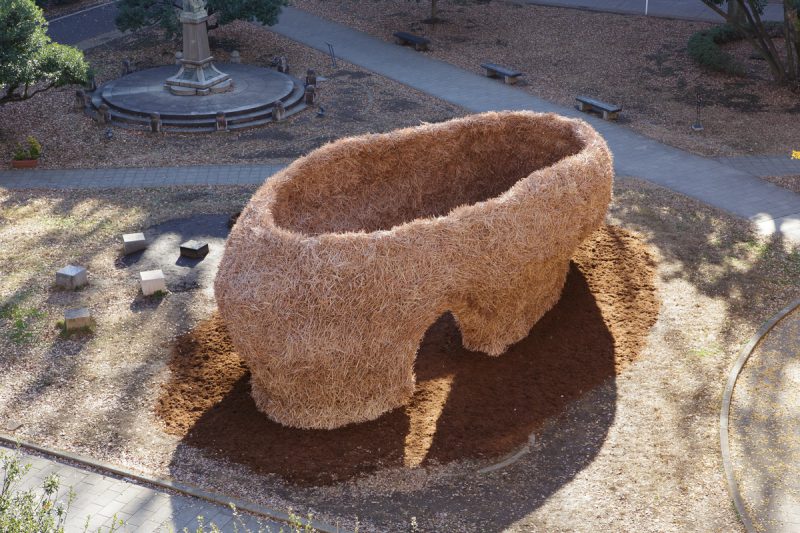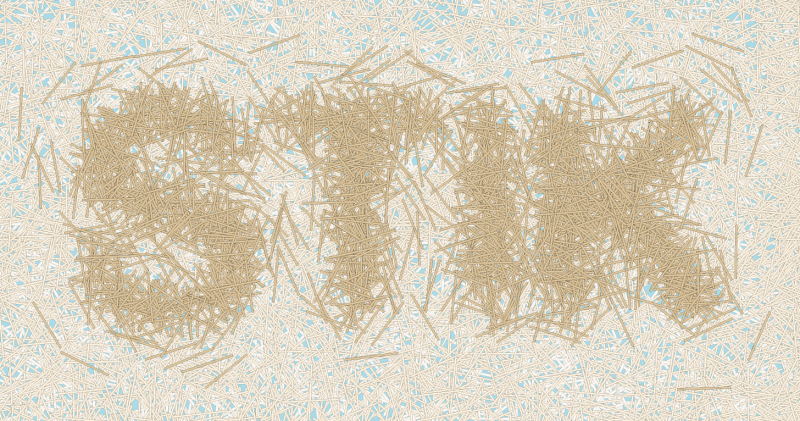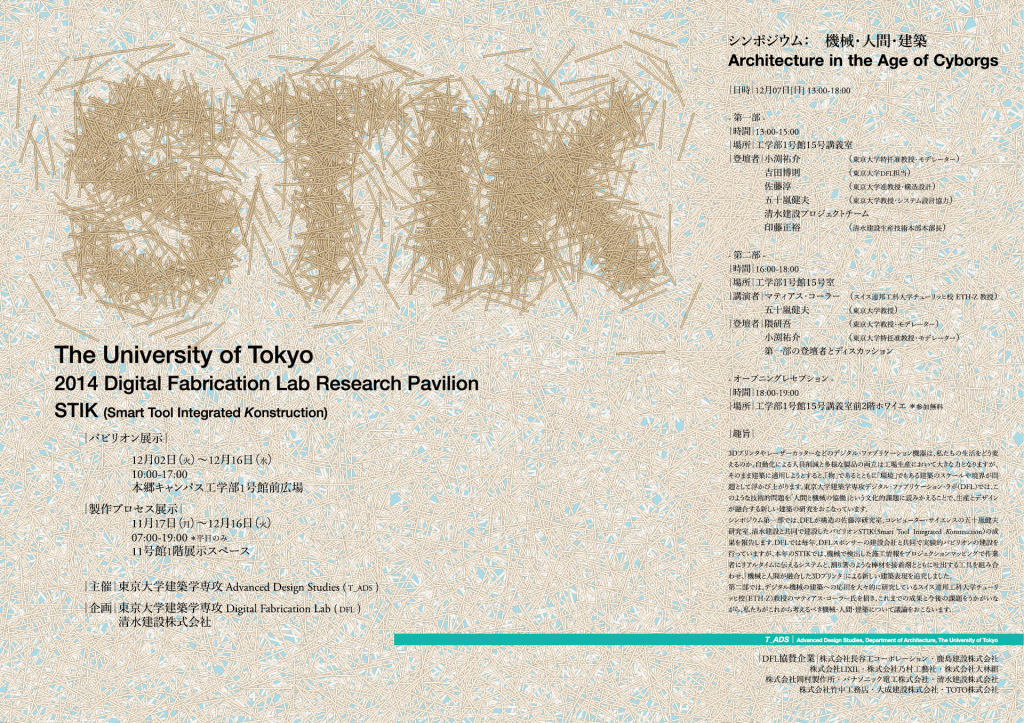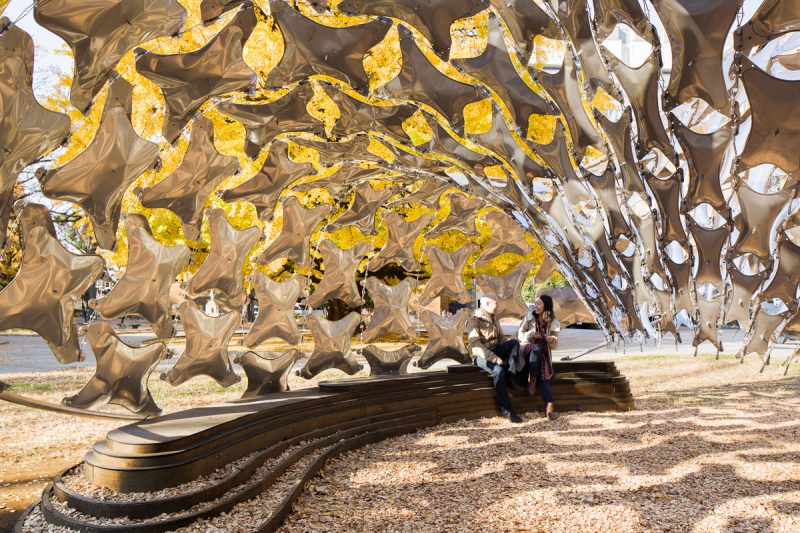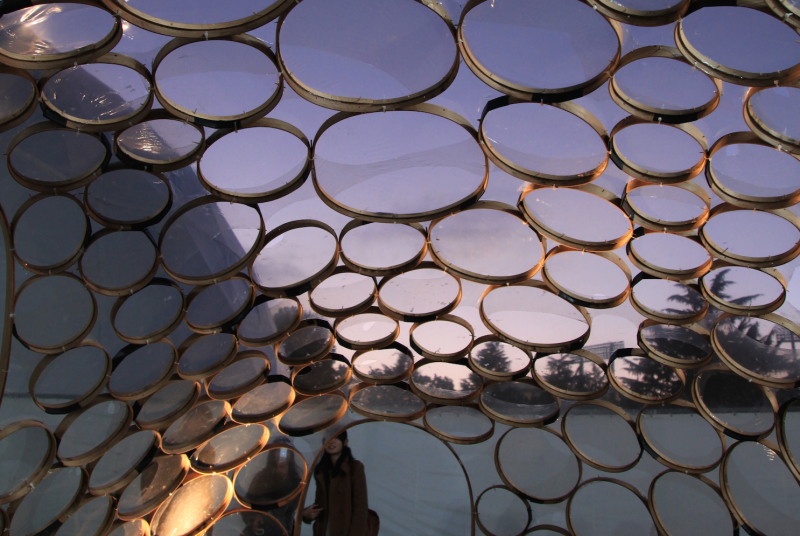DFL Colloquium
Where does design start and end? The role of architects in the age of advanced computation and AI
Thursday 22 March 2018, 17:00-19:30 (doors open at 16:30, admission free) Lecture Theatre 15, Faculty of Engineering Building 1, The University of Tokyo Hongo Campus
Language – English
‘Which jobs will be replaced by AI and robots?’ This type of catchy headline has become increasingly common in most news outlets, effectively grabbing viewers’ and readers’ attention. While presented as either something to embrace or refuse, it is undoubtedly imminent. Should architects be concerned? Could architects’ creative design processes also be done by AI and robots? If AI and robots will perform creative design processes better, then what will humans do? In other words, what does it mean to say, designed and made by humans?
The aim of this colloquium is to discuss the state of design culture specifically from the point of view of ‘making physical stuff.’ Computational capabilities have already dramatically altered the way manufacturing industries operate and deliver products with high degrees of efficiency and productivity through automation, robotic fabrication and building information modelling. Today, these methods and tools have become integral parts of architectural production processes, being both taught and practiced. This event will explore, and discuss the potentials and concerns for today’s designers and makers by asking where do design processes start and end?
Session 1 Presentations 17:00-18:20
Yusuke Obuchi Associate Professor, Department of Architecture, The University of Tokyo
Hannes Mayer Senior Researcher, Director of Education, Gramazio Kohler Research, ETH Zurich
Lisa Iwamoto Professor, Department of Architecture, University of California, Berkeley
Session 2 Panel Discussion 18:30-19:30
Moderator Thomas Weaver TU Delft
Curatorial Presentation by Fumio Nanjo Director, Mori Art Museum
Organised by The University of Tokyo Advanced Design Studies (T_ADS) The University of Tokyo Digital Fabrication Fab (DFL)
DFLトーク・セッション Where does design start and end? The role of architects in the age of advanced computation and AI
2018年3月22日(木)17:00-19:30 (開場16:30) 東京大学本郷キャンパス工学部1号館15号講義室 (定員100名先着順 入場無料)
*使用言語:英語
デジタル機械・IT技術の発展に伴い、ものづくりにおける生産が設計プロセスと結びついて、従来のものづくりにあった人間との関係が希薄になりつつあります。建築においても、設計と施工が一体化することで、施工は「つくるもの(創造)」から「解釈のない/できない組み立てる仕事」に変わりつつあります。
他方、リノベーションのような、既存のデザインに手を加える設計や、解体後の廃材の活用に係るデザインなど、これまでの「設計=かたち/空間のデザイン」だけではない時代になり、設計、ひいては建築家の役割の再定義が求められています。
このトーク・セッションが着目するのは、人間と設計・施工プロセスとの関係が変わりつつある時代における「デザインのはじまりとおわり」です。
Session 1では、それぞれ異なるかたちでデジタル機械・IT技術の応用を試みる建築家や研究者の方々よりお話を伺います。Session 2のパネル・ディスカッションでは、著述家かつ歴史家であるデルフト工科大学のThomas Weaver氏、森美術館館長の南條史生氏にコーディネート頂きながら、デジタル・AI時代における設計と建築家の役割について議論します。
Session 1 Presentations 17:00-18:20
小渕 祐介 東京大学大学院工学系研究科建築学専攻 准教授 Hannes Mayer スイス連邦工科大学チューリッヒ校Gramazio Kohler Research 上席研究員 教育長 Lisa Iwamoto カリフォルニア州立大学バークレー校建築学科 教授
Session 2 Panel Discussion 18:30-19:30
Moderator Thomas Weaver デルフト工科大学
Curatorial Presentation by 南條 史生 森美術館 館長
主催 東京大学建築学専攻Advanced Design Studies (T_ADS) 東京大学建築学専攻Digital Fabrication Fab (DFL)
The University of Tokyo Digital Fabrication Lab (DFL) has annually been involved in an experimental pavilion installation, aiming at the application of digital technologies to architectural construction. Its projects are the embodiments of human-machine interaction, demonstrating its unique fabrication systems that make a worker behave as part of a 3D printer; translating human movement into formwork.
At the DFL, we believe that the role played by digital technologies in design and construction does not necessarily have to make them more efficient and streamlined. Their potential is instead focused on personalising the fabrication process. In our view, the act of making as such becomes a design in itself by means of computer assistance. The diversity that humans collectively show is organically expressed in the architecture.
PAFF is an architecture made by reference to sound rather than visual information. We developed a sound guidance system whereby a worker’s task is to recognise a sound source in a three-dimensional space, and shoot fibres into various targets. PAFF is expressed through the accumulation of the multi-agent system, revealing personal differences in the way that people perceive space through sound.
Project Credits:
UNIVERSITY OF TOKYO ADVANCED DESIGN STUDIES PROFESSORS Yusuke Obuchi Jun Sato
UNIVERSITY OF TOKYO PROJECT MANAGEMENT Shohei Furuichi Shuntaro Nozawa Shuta Takagi Deborah Lopez Lobato Hadin Charbel
PROJECT COLLABORATOR TAISEI CORPORATION
SPONSOR TAISEI CORPORATION
SECOND YEAR STUDENT TEAM Mika Kaibara Portugaise Ziyi Wu Nathalia Barros Abate Rotelli Ruta Stankeviciute Xiaoke Chen Ao Yang
FIRST YEAR STUDENT TEAM Ruoyu Chen Wanting Liu Yuqing Shi Anran Wang Yuxi Zhu Sher Lin Tan Otto Lindstam Sofia Iino Cotado Dominika Demlova Priya Murugeswaran
ADDITIONAL SUPPORT Machiko Asahara Kyosuke Kawamura Kota Isobe
PHOTOGRAPHS Otto Lindstam Yuqing Shi
DFL Research Pavilion 2017 PAFF (Projectile Acoustic Fibre Forest)
パビリオン展示 2017/11/28 – 2017/12/10, 10:00-17:00 In Front of Faculty of Engineering Building 1, Hongo Campus 東京大学本郷キャンパス工学部1号館前広場
パネル・模型展示 2017/11/28 – 2017/12/09, 7:00-18:00 (Weekdays and Saturday) T lounge, Faculty of Engineering Building 11 東京大学本郷キャンパス工学部11号館1階T lounge
*12/02はシンポジウム開催に合わせ、15:00から16:00までの間、プロジェクト関係者がパビリオン及びエキシビション会場に常駐しております。どうぞお気軽にお声がけ下さい。
シンポジウム Human Centric Digital Fabrication 人間主体のデジタル・ファブリケーション 2017/12/02, 16:00-19:00 (開場15:30) 東京大学工学部1号館15号講義室 (定員100名先着順 入場無料)
デジタル技術が可能にするデザインと施工プロセスの一体化は、つくることを通じた個の表現を促し、建築を変えることができるか?
東京大学建築学専攻Digital Fabrication Lab(DFL)では、建築施工におけるデジタル技術の活用をテーマに、毎年実験的なパビリオンを制作しています。これまで、人間がコンピュータのナビゲーションに従って施工する人機一体3Dプリンターや人間の動きそのものを型枠に見立てたファブリケーション・システムを建築スケールで再現してきました。
DFLがデジタル技術に求めているのは、デザインや施工を効率的にする役割のみに限りません。DFLが着目しているのは、デジタル技術の媒介によってつくるという行為自体がデザイン・プロセスとなり、人間が総体として持つばらつきが建築として有機的に表現される可能性です。
本年プロジェクトPAFFは、目ではなく耳を頼りにしてつくる建築です。作業者が音のガイドを聞きながら空間的広がりや奥行きを感知し、ターゲットに繊維素材を吹き飛ばす施工システムに挑戦します。音の世界を三次元的に認識しようとする過程で表出する個人差に着目し、それが重なり合ってできる建築を目指します。
シンポジウムでは、人間の個性や多様性、人間がつくることの不確実性を楽しむプロセスとしての施工について考えます。本年プロジェクトの共同実施企業である大成建設のプロジェクト・メンバーや建築とは異なる分野でご活躍される方々をお招きし、人間がつくることとデジタル技術の関係について議論します。
第1部(16:00-) 小渕 祐介 東京大学大学院工学系研究科建築学専攻 准教授 中野 優 大成建設株式会社建築本部 技術部長 佐藤 淳 佐藤淳構造設計事務所 主宰 東京大学大学院新領域創成科学研究科社会文化環境学専攻 准教授
第2部(17:30-) 権藤 智之 東京大学建築生産マネジメント寄付講座 特任准教授 稲見 昌彦 東京大学先端科学技術研究センター 教授 JST ERATO 稲見自在化身体プロジェクト 研究総括 新木 仁士 ARスポーツ「HADO」開発者、株式会社meleap CAO
総括 隈 研吾 建築家、東京大学大学院工学系研究科建築学専攻 教授
主催 東京大学建築学専攻Advanced Design Studies (T_ADS) 企画 東京大学建築学専攻Digital Fabrication Lab (DFL)・小渕祐介研究室 共同実施 大成建設株式会社 東京大学大学院新領域創成科学研究科社会文化環境学専攻佐藤淳研究室 (順不同)
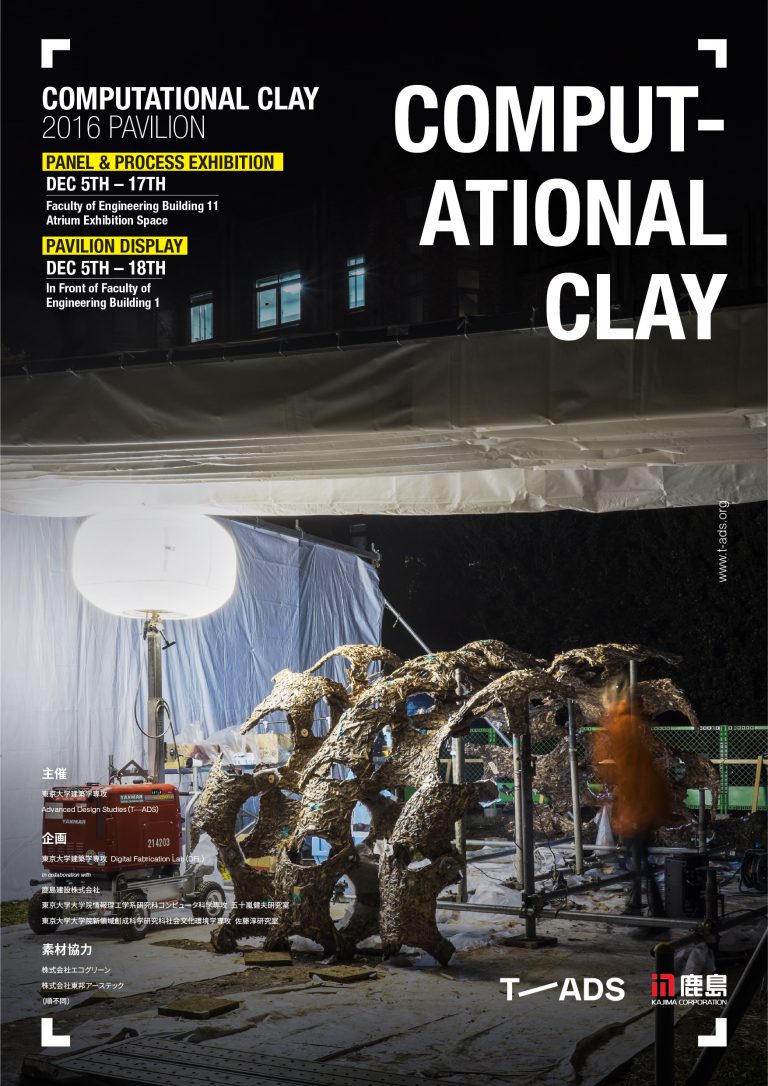
パビリオン公開 // PAVILION DISPLAY 12月5日(月)– 12月18日(日)// December 5 (Mon) – December 18 (Sun) 10:00 – 17:00
東京大学本郷キャンパス工学部1号館前広場 The University of Tokyo, Hongo Campus, Engineering Building #1 Plaza
パネル・模型展示 // PANEL AND PROCESS EXHIBITION 12月5日(月)– 12月17日(土)// December 5 (Mon) – December 17 (Sat) 平日と土曜日のみ // Weekdays and Saturdays only 07:00 – 18:00 (12月5日は13:00から) // (Open at 13:00 on December 5) 東京大学本郷キャンパス工学部 11 号館1階展示スペース(入場無料) The University of Tokyo Hongo Campus, Engineering Building #11, 1F Exhibition Space (free entry)
主催: 東京大学建築学専攻 Advanced Design Studies(T—ADS) PRODUCED BY: Advanced Design Studies, Department of Architecture, The University of Tokyo
企画: 東京大学建築学専攻 Digital Fabrication Lab(DFL) 鹿島建設株式会社 東京大学大学院情報理工学系研究科コンピュータ科学専攻 五十嵐健夫研究室 東京大学大学院新領域創成科学研究科社会文化環境学専攻 佐藤淳研究室 素材協力: 株式会社エコグリーン、株式会社東邦アーステック(順不同)
PLANNING: Digital Fabrication Lab (DFL), Department of Architecture, The University of Tokyo
IN COLLABORATION WITH: Kajima Corporation Graduate School of Information Science and Technology, Department of Computer Science, Takeo Igarashi Laboratory Graduate School of Frontier Sciences, Department Socio-cultural Environmental Studies, Jun Sato Laboratory MATERIALS PROVIDED BY: Eco Green, Toho EarthTech (in random order)
東京大学建築学専攻Digital Fabrication Lab(DFL)では、建築施工におけるデジタル技術の活用をテーマに、毎年実験的なパビリオンを制作しています。単に技術による自動化や高度化を目指すのではなく、そこに「人間が関わること」の可能性を探る実証の場として、これまで「人間と機械が融合した3Dプリンター」(2014年STIKパビリオン)や「巨大3Dペン」(2015年TOCAパビリオン)を建築スケールで再現してきました。
本年Computational Clayプロジェクトでは「人間が関わること」をより一層推し進め、個性としての身体パフォーマンスを建築表現に反映させるため、人の動きと素材と関係に着目したユニークなパネル加工システムを開発しました。
Every year in the University of Tokyo’s Digital Fabrication Lab (DFL), digital fabrication technologies are used to produce an experimental pavilion project. The aim, rather than being simply to achieve automation or precision through use of such technologies, is to explore the potentials for human and machine collaboration. Past projects have focused on fusions between humans and machines through the use of 3D printers: the 2014 STIK Pavilion explored this theme through guided aggregation, and the 2015 TOCA Pavilion by using humans as a parameter along with an oversized 3D pen.
This year, in the Computational Clay Pavilion, we advance the role of the human in construction one step further, examining how an individual’s capabilities and performance can be expressed in an architectural output. We have developed a unique panelized construction system wherein the movements of humans and their relationship to the material are explored.
The 2015 Digital Fabrication Lab project, TOCA (Tool Operated Choreographed Architecture) explored the potentials of human-machine collaboration in a manner that expanded on the knowledge acquired in the 2014 STIK Pavilion project. The research and development of the TOCA project sought to utilize the adaptability and creativity of humans, and combine it with the precision and efficiency of machinery. The resulting pavilion utilized a scanning and guiding system to support human users on-site, a material used to extrude components (foam), a handheld “smart” tool to dispense the material, and a geometric form which iteratively optimized through use of a feedback system that integrated human error. The pavilion project, which began with a digitally-defined target model, was constructed on-site by teams of users, who sprayed components by hand. The results of the work were scanned and analyzed, and an updated digital model was defined and indicated to users for the next layer of the project. In this manner, any “errors” introduced throughout the spraying process were integrated into subsequent construction steps. The final pavilion represents the accumulation and integration of these errors. The project was made possible through cross-disciplinary collaboration; structural engineering, architecture, and computer science laboratories contributed to realizing the technologies and the final output.
Project Credits
University of Tokyo Staff
Yusuke Obuchi (Associate Professor), Department of Architecture
Jun Sato (Professor), Department of Frontier Sciences
Takeo Igarashi (Professor), Department of Computer Science
Kaz Yoneda (Research Assistant), Department of Architecture
Kosuke Nagata (Technical Advisor), Computer Science
Kensuke Hotta (Course Assistant), Department of Architecture
Mika Araki (Researcher), Department of Frontier Sciences
Yosuke Takami (Technical Assistant), Department of Computer Science
Students
Gilang Arenza
Hadin Charbel
Ann-Kristin Crusius
Jiang Lai
Samuel Eugene Lalo
Deborah Lopez Lobato
Yuanfang Lu
Ratnar Sam
Pitchawut Virutamawongse
Ying Xu
Jan Vranovsky
Akane Imai
Pan Kalin
Yi Dong Alric Lee
Ittidej Lirapirom
Kenneth Larssen Lonning
Luca Maruli
Moritz Munzenmaier
Masatoshi Nishizato
Victor Hugo Wido
Christopher Wilkens
Li Xu
Isaac Sekjoon Yoo
Yihan Zhang
Sponsor
Takenaka
Photographer
Jan Vranovsky
The University of Tokyo Digital Fabrication Lab Pavilion 2015 TOCA (Tool Operated Choreographed Architecture)
|パビリオン展示| 日時:12月1日(火)〜12月14日(月) 10:00 – 17:00 場所:東京大学本郷キャンパス工学部1号館前広場
|パネル・模型展示| 日時:11月24日(火)〜12月14日(月) 7:00 – 18:00(平日のみ) 場所:東京大学本郷キャンパス工学部11号館1階展示スペース
|シンポジウム| 機械・人間・建築 Ⅱ Architecture in the Age of Cyborgs Ⅱ 日時:12月5日(土)13:00 – 18:00(開場12:30) 場所:東京大学工学部1号館15号講義室(定員100名先着順 入場無料) 趣旨:3Dプリンタやレーザーカッターなどのデジタル・ファブリケーション機器は、建築の生産と私たちの生活をどう変えるのか—— DFL(Digital Fabrication Lab)は毎年、建設会社と共同で、デジタル・ファブリケーションを応用した実験的パビリオンの建設を行っています。本年、竹中工務店と共同で行っているTOCA(Tool Operated Choreographed Architecture)プロジェクト(進行中)は、昨年に引き続き「人と機械の恊働」をテーマとし、「人が地面から建築を描き上げる3Dペン」による建築に挑みます。 昨年取り組んだ STIK(Smart Tool Integrated Konstruction)プロジェクトでは、あらかじめ決めた目標形状に向けて、デジタルの施工情報をプロジェクション・マッピングで作業者に伝えるシステムと、割り箸のような棒材を接着剤とともに送り出す手持ち工具を組み合わせ、「人と機械が融合した3Dプリンタ」による新しい建築表現を実現しました。今年のTOCAプロジェクトでは、目標形状を作業者に伝えることに加えて、人の作業による誤差をデジタル化して構造最適化をくり返すことで、目標形状自体を徐々に変化させることを試みます。これは、人と機械が恊働することにより、あらかじめ形状がデザインされていながら、人間的なゆらぎを柔軟に取り込み、実際の施工によってはじめてユニークに形状が確定する建設システムです。 シンポジウムでは、第一部で、DFLと共同研究した構造の佐藤淳研究室、コンピューター・サイエンスの五十嵐健夫研究室、そして竹中工務店とともにパビリオンTOCAの成果を報告します。第二部では、デジタル機械の建築への応用研究を推進しているスイス連邦工科大学チューリッヒ校(ETH-Z)教授のマティアス・コーラー氏を招き、国内で先進的な研究を行っている研究者の方々とともに、私たちがこれから考えるべき機械・人間・建築について議論を行います。 第一部(13:00 -): 小渕祐介(東京大学准教授)、米田カズ(東京大学小渕研究室)、五十嵐健夫(東京大学教授・コンピュータ科学専攻)、荒木美香(東京大学佐藤淳研究室・構造担当)、竹中工務店プロジェクトチーム 第二部(15:30 -): マティアス・コーラー(スイス連邦工科大学チューリッヒ校教授)、金田充弘(東京藝術大学准教授)、池田靖史(慶應義塾大学大学教授)、小林博人(慶應義塾大学教授) オープニングレセプション(18:00 – 19:00)参加無料
主催 東京大学建築学専攻 Advanced Design Studies(T_ADS) 企画 東京大学建築学専攻 Digital Fabrication Lab(DFL) 共同研究 株式会社竹中工務店 東京大学大学院情報理工学系研究科コンピュータ科学専攻 五十嵐健夫研究室 東京大学工学系研究科建築学専攻 佐藤淳研究室 研究協力 株式会社エービーシー商会 太陽金網株式会社 マーキュリー・サプライ・システムス株式会社 デミレックジャパン株式会社 圓井繊維機械株式会社 サンエム工業株式会社 (順不同)
Display of the Pavilion In Front of Faculty of Engineering Building 1, Hongo Campus 2015/12/1 — 2015/12/14 10:00 – 17:00
Panel and Process Exhibition Faculty of Engineering Building 11 Atrium Exhibition Space 2015/11/24 — 2015/12/14 7:00 – 19:00 (Weekdays)
Symposium : Architecture in the Age of Cyborgs Ⅱ Faculty of Engineering Building 1 Lecture Hall 15 2015/12/5 13:00 — 18:00 (Opens from 12:30) Session 1 (13:00 – ) – Yusuke Obuchi (The University of Tokyo) – Kaz Yoneda (The University of Tokyo) – Takeo Igarashi (The University of Tokyo, Computer Science) – Mika Araki (The University of Tokyo, Structure Engineering) – TAKENAKA Project Team Session 2 (15:30 – ) – Matthias Kohler (ETH-Z) – Mitsuhiro Kanada (Tokyo University of the Arts) – Yasushi Ikeda (Keio University) – Hiroto Kobayashi (Keio University) Opening Reception 18:00 – 19:00
Design Team:
The University of Tokyo teaching staff: Yusuke Obuchi, Toshikatsu Kiuchi, So Sugita, Hironori Yoshida, Kosuke Nagata, Kaz Yoneda
The University of Tokyo students: Kevin Clement, Minjie Xu, Fawad Osman, Qiaomu Jin, Ornchuma Saraya, Benjamin Berwick, Anders Rod, Yanli Xiong, Gilang Arenza Judinaputra, Pitchawut Virutamawongse, Samuel Aaron Eugene Lalo, Rossina Shatarova, Ratnar Sam, Ying Xu, Deborah Lopez, Hadin Habib Charbel, Ann-Kristin Crusius, Jiang Lai, Yuanfang Lu, Alexandra Karlsson, Jan Vranovsky, Mariko Mori
Completion date: November 2014
Digital Fabrication Lab Pavilion, 2014
Design Team:
The University of Tokyo teaching staff: Yusuke Obuchi, Toshikatsu Kiuchi, So Sugita, Hironori Yoshida, Kosuke Nagata, Kaz Yoneda
The University of Tokyo students: Kevin Clement, Minjie Xu, Fawad Osman, Qiaomu Jin, Ornchuma Saraya, Benjamin Berwick, Anders Rod, Yanli Xiong, Gilang Arenza Judinaputra, Pitchawut Virutamawongse, Samuel Aaron Eugene Lalo, Rossina Shatarova, Ratnar Sam, Ying Xu, Deborah Lopez, Hadin Habib Charbel, Ann-Kristin Crusius, Jiang Lai, Yuanfang Lu, Alexandra Karlsson, Jan Vranovsky, Mariko Mori
Shimizu Corporation: Kazuhide Sakai, Takeya Sato, Hiroyuki Ogura, Hideki Umeyama, Kiichiro Tanno, Zaita Hironori, Syunsuke Igarashi, Masahiro Indo, Keigo Takeuchi, and Shimiz Kiba Wood Workshop
Structural engineer: Jun Sato, Mika Araki, Masaaki Miki Department of Socio-Cultural Environmental Studies / Graduate School of Frontier Sciences
Guidance System: Prof. Takeo Igarashi, Yosuke Takami Department of Computer Science / Graduate School of Information Science and Technology
Design Phase: October 2013 – March 2014
Design development, fabrication & construction: April – November 2014
Completion date: November 2014
The University of Tokyo 2014 Digital Fabrication Lab Research Pavilion STIK (Smart Tool Integrated Konstruction)
|パビリオン展示| 日時:12月2日(火)〜12月16日(火) 10:00 – 17:00 場所:東京大学本郷キャンパス工学部1号館前広場
|制作プロセス展示| 日時:11月17日(月)〜12月16日(火) 7:00 – 19:00(平日のみ) 場所:東京大学本郷キャンパス工学部11号館1階展示スペース
|シンポジウム|
機械・人間・建築 Architecture in the Age of Cyborgs
日時:12月7日(日)13:00 – 18:00
場所:東京大学工学部1号館15号講義室
趣旨:3Dプリンタやレーザーカッターなどのデジタル・
Digital Fabrication Lab Pavilion, 2013
Design Team:
The University of Tokyo teaching staff: Yusuke Obuchi, Toshikatsu Kiuchi, So Sugita, Hironori Yoshida
The University of Tokyo students: Christopher Sjoberg, Yeonsang Shin, Miguel Puig, Zhang Ye, Ana Luisa Soares, Ma Sushuang, Tong Shan, Andrea Trajkovska, Quangtuan Ta, Wei Wang, Anders Rod, Benjamin Berwick, Qiaomu Jin, Fawad Osman, Yanli Xiong, Andrea Bagniewski, Kevin Clement, Ornchuma Saraya, Minjie Xu
Obayashi Corporation: Tomoo Yamamoto, Kenichi Misu, Gendai Ono, Yasuo Ichii, Keisuke Fujiwara, Shunsuke Niwa, Tatsuji Kimura, Masaru Emura, Taiki Byakuno, Takahide Okamoto
Structural engineer: Jun Sato
Fabrication of components: Tsukasa Takenaka (AnS Studio)
Construction: Multibuilder
Fabrication: Togari Kogyo
Structure: Freeform Surface Tensegrity Structure
Specifications:
Compressive components: stainless steel plates with 0.5 mm / 0.8 mm / 1.2 mm / 1.5 mm thickness
Tension cables: stainless steel cables in 3 mm diameter
Base ring: stainless steel pipe in 48mm diameter
Foundation: precast concrete blocks
Furniture: painted plywood
Weight: 1.5 t (upper structure in stainless steel), 1 t (concrete foundation)
Design Phase: October 2012 – March 2013
Design development, fabrication & construction: April – November 2013
Completion date: 24 November 2013
Circle Pack Pavilion
Project Team : Taichi Kuma, Colin Xuhao Lin, Mickey Kyaw Htoo, Wang Chong, Guillaume Dumont, Wang Lin with Olesia Biloborodko, Yuta Ito, Ana Ilic, Yasemin Sahiner, Maria Larsson, Dejan Zoran Mojic, Shuang Li, Dasom Lee, Ana Luisa Soares, Zhang Ye, Tong Shan, Shin Yeonsang, Miguel Puig, Christopher Sjoberg, Ma Sushuang, Laura Miguelanez, Andrea Trajkovska
Yusuke Obuchi, Associate Professor Jun Sato, Associate Professor Toshikatsu Kiuchi, Course Assistant So Sugita, Course Assistant
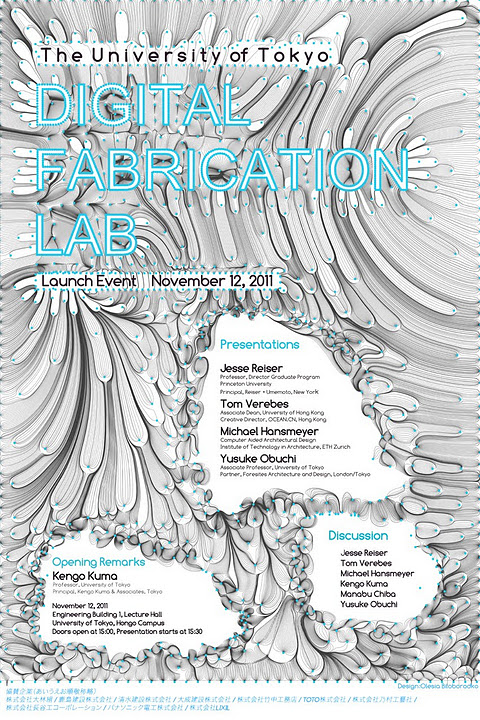
The University of Tokyo Digital Fabrication Lab Launch Event March 15, 2011 (Tuesday) 16:00
Presenters: Jesse Reiser Tom Verebes Michael Hansmeyer Yusuke Obuchi
Opening Remarks by: Kengo Kuma
Discussion: Jesse Reiser Tom Verebes Michael Hansmeyer Kengo Kuma Manabu Chiba Yusuke Obuchi

